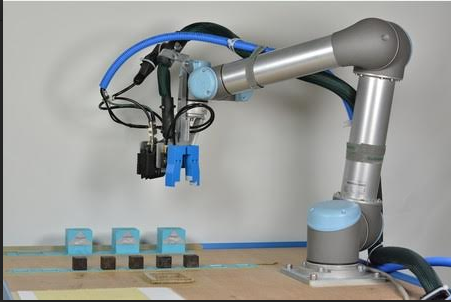Building Themselves From Scratch: the Future of Robots

Credit: Cambridge University
A year ago, Harvard scientists figured out how to make self-assembling origami robots. This year, researchers from Zurich University and Cambridge went a step further and built a mother robot that can produce model babies that progressively improve without human interference.
Pallab Ghosh, a writer for the BBC, managed to capture the world’s general sentiments on this latest technological development: “It seems like a plot from a science fiction film: a robot that builds other robots – each one better than the previous generation.”
These baby robots are built out of plastic cubes and motors. The mother robot then assays their individual performances to determine which configurations lead to the best independent performance. In fact, the mother robot is so efficient in determining which “inherited traits” were the most effective that the tenth generation of robots built moved twice the distance of the first before running out of battery power.
This research is leading to paradigm-breaking shifts in how we think about the function of robots. They developed from simple followers to complex creators themselves. Dr. Fumiya Iida, one of the researchers involved in this project, said, “”We think of robots as performing repetitive tasks, and they’re typically designed for mass production instead of mass customisation, but we want to see robots that are capable of innovation and creativity.”
In the everyday world, robots are increasingly improving themselves in pursuit of “innovation and creativity.” Last year, a robot fooled 33% of judges during Turing Test for the first time. That is, it fooled a significant percentage of humans into thinking that it was a human itself. Chess-playing computers have been defeating chess World Champions like Gary Kasparov since the 1980’s. Clearly, Dr. Iida’s hope is not as far-fetched as it may seem.
Robotic development is also taking its cues from the natural world. Like Dr. Iida believes, robotics today can “draw lessons from the natural world to improve the efficiency and flexibility of traditional robotic systems.” Scientists have been studying hummingbirds to learn how to create better flying robots. There are insect-inspired robots that can jump on water, snake-like robots that can charge cars, and more.
But why exactly would one want to research evolving robots? It turns out that there are myriad applications, and like anything in science, new developments will only evolve into greater prospects for humanity.
The research team currently working on these robots has several ideas for how these robots could work. Dr. Iida says that this could potentially be used to answer questions about the evolution of intelligence: “One of the big questions in biology is how intelligence came about – we’re using robotics to explore this mystery.”
Further, robots that are built this way have the potential to improve themselves and adapt to new situations. “You can imagine cars being built in factories and the robot looking for defects in the car and fixing them by itself,” said Andre Rosendo, who also worked on the project with Iida. Rosendo cites other examples such as a future where robots participate in agriculture and harvesting in order to improve yield.
So, how long until we have robots as cool as those in Star Wars or Star Trek? “It’s still a long way to go before we’ll have robots that look, act and think like us,” Dr. Iida said. But, he also concedes: “We’re not there yet, but sure, why not, maybe in about 30 years.”
Sources: BBC, Cambridge News

This is Anoushka’s second and final year in The Talon. She still does not know how to write a biography and would probably ‘google’ it if she knew...









